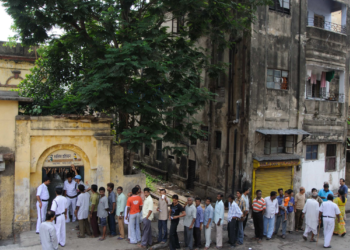Overview of the Prevention of Money Laundering Act, 2002
Purpose and Significance
The Prevention of Money Laundering Act (PMLA) was enacted by India’s Parliament under Article 253, which empowers it to make laws for implementing international agreements. The Act aims to prevent money laundering and contains provisions for the confiscation of property derived from, or involved in, money laundering. The PMLA is crucial in maintaining the integrity of India’s financial system.
Key Features
The PMLA 2002 outlines various obligations for financial institutions, including banks and other entities, to prevent money laundering. These include the duty to report suspicious transactions and maintain detailed records of all significant financial transactions. The Act also establishes a framework for the enforcement of these obligations through various regulatory and judicial authorities.
Enactment and Implementation Timeline
The PMLA was enacted on January 17, 2003, and came into force on July 1, 2005. This timeline reflects the government’s commitment to implementing robust anti-money laundering measures in a phased and structured manner. The enforcement of the Act is overseen by the Ministry of Finance, specifically under the Department of Revenue.
Objectives of the PMLA 2002
Combating Money Laundering
The primary objective of the Prevention of Money Laundering Act, 2002 is to combat money laundering activities that threaten the integrity of the financial system. The act provides a robust legal framework to detect and prosecute those involved in money laundering, thereby safeguarding the economic stability of the nation.
Confiscation of Illegally Acquired Assets
A crucial aspect of the PMLA is the power it grants to authorities for the confiscation of assets that are found to be acquired through illicit means. This not only serves as a deterrent but also ensures that the proceeds of crime are not utilized to fund further illegal activities.
Regulatory Framework Enhancement
The PMLA enhances the regulatory framework by imposing stringent obligations on financial institutions. These include the duty to maintain detailed records, report suspicious transactions, and conduct due diligence on customers. Such measures are vital for the early detection and prevention of financial crimes.
Key Provisions of the PMLA 2002
Obligations for Financial Institutions
Financial institutions are required to adhere to strict guidelines under the PMLA 2002, which include customer due diligence, monitoring of transactions, and maintaining records for a minimum period. These obligations are crucial for detecting and preventing suspicious activities.
Record Keeping and Reporting Requirements
The PMLA mandates that all financial institutions maintain detailed records of all significant transactions, both domestic and international, for a period of ten years. These records must be available for scrutiny by the relevant authorities to ensure compliance and facilitate investigations.
Penalties for Non-Compliance
Non-compliance with the provisions of the PMLA can lead to severe penalties, including hefty fines and imprisonment. The act empowers the Enforcement Directorate (ED) to conduct search and seizures, and attach proceeds of crime, ensuring that violators are held accountable.
Impact and Effectiveness of the PMLA
Success Stories in Combating Money Laundering
The Prevention of Money Laundering Act, 2002 (PMLA) has been instrumental in deterring financial crimes across India. Numerous high-profile cases have been successfully prosecuted, showcasing the act’s robust framework and its role in maintaining financial integrity.
Challenges and Criticisms
Despite its successes, the implementation of the PMLA 2002 has faced several challenges, including bureaucratic hurdles and the need for more effective inter-agency cooperation. Critics also point out the need for updates to keep pace with evolving financial technologies and methods of money laundering.
Future Prospects and Amendments
Looking forward, amendments are being considered to strengthen the PMLA further. These include enhancing the clarity of legal provisions, improving enforcement mechanisms, and expanding the scope to include newer forms of financial crimes. The ongoing reforms aim to bolster the effectiveness of the PMLA in combating money laundering while aligning with global standards.
Role of Various Stakeholders
Government and Regulatory Authorities
The government and regulatory authorities play a pivotal role in the enforcement and oversight of the Prevention of Money Laundering Act, 2002. They are responsible for establishing guidelines, conducting investigations, and ensuring compliance among all entities. Their actions are crucial in maintaining the integrity of financial systems and preventing money laundering activities.
Financial Institutions and Intermediaries
Financial institutions and intermediaries are at the frontline in the battle against money laundering. They are required to implement robust systems for monitoring transactions, reporting suspicious activities, and conducting due diligence on clients. Their proactive engagement is essential for the early detection and prevention of potential laundering schemes.
Public and Legal Enforcement
The public’s role includes being vigilant and reporting suspicious financial activities. Legal enforcement agencies, such as the Enforcement Directorate, are tasked with investigating and prosecuting money laundering cases. Their effectiveness is often enhanced by public cooperation and the provision of necessary information to carry out their duties effectively.
Comparative Analysis with Global Standards
Similarities with International Laws
The Prevention of Money Laundering Act (PMLA) 2002 of India aligns closely with international laws such as the Money Laundering Control Act of 1986 in the USA. Both legislations emphasize the importance of enhancing preventative measures for money laundering and establish a framework for financial institutions to follow stringent due diligence and reporting requirements.
Differences and Unique Aspects
While the PMLA shares many similarities with global standards, it also contains unique provisions tailored to the Indian context. For instance, the PMLA includes specific sections on the confiscation of property, which are more detailed compared to some international laws. This reflects India’s strong stance on confiscation of illegally acquired assets.
Adaptations and Global Cooperation
India actively participates in international forums to shape and adapt global efforts against money laundering. The country’s commitment to global cooperation is evident in its mechanisms for continuous monitoring and evaluation of the implementation of reforms. This proactive approach helps India keep a step ahead in the global fight against money laundering.
Educational and Awareness Initiatives
Programs for Financial Institutions
Financial institutions play a crucial role in the prevention of money laundering. Educational programs are designed to enhance their understanding and compliance with the PMLA. These programs often include workshops, seminars, and e-learning modules that cover the legal obligations and procedures for detecting and reporting suspicious activities.
Public Awareness Campaigns
To effectively combat money laundering, it is essential to raise public awareness about its dangers and the role of the PMLA. Campaigns typically utilize media outlets, online platforms, and community events to disseminate information, aiming to foster a proactive public attitude towards reporting suspicious financial activities.
Training and Capacity Building for Enforcement Agencies
Enforcement agencies are at the forefront of the fight against money laundering. Training programs are crucial for building their capacity to enforce the PMLA effectively. These programs focus on advanced investigative techniques, legal procedures, and the use of technology in tracking and prosecuting money laundering cases.
Conclusion
In conclusion, the Prevention of Money Laundering Act (PMLA) 2002 is a critical legislative framework designed to combat money laundering in India. Enacted in 2002 and enforced from 2005, it mandates stringent measures for financial institutions to prevent the illegal conversion of money. The act not only aims to deter such financial crimes but also facilitates the confiscation of assets derived from money laundering activities. Compliance with PMLA is essential for maintaining the integrity of India’s financial systems and for supporting global efforts against financial crimes.
Frequently Asked Questions
What is the Prevention of Money Laundering Act, 2002?
The Prevention of Money Laundering Act, 2002 (PMLA) is legislation enacted by the Indian Parliament to prevent money laundering and provide for the confiscation of property derived from money laundering. It aims to convert illegally earned money into legitimate money and came into effect in July 2005.
What are the main objectives of the PMLA 2002?
The primary objectives of the PMLA 2002 are to combat money laundering, provide for the confiscation of property derived from illegal activities, and enhance the regulatory framework to monitor and control financial transactions related to illegal activities.
What obligations does the PMLA 2002 impose on financial institutions?
The PMLA 2002 requires banking companies, financial institutions, and intermediaries to verify the identity of clients, maintain detailed records of transactions, and furnish information to the Financial Intelligence Unit of India (FIU-IND) as part of efforts to combat money laundering.
What are the penalties for non-compliance with the PMLA 2002?
Non-compliance with the provisions of the PMLA 2002 can lead to hefty fines and imprisonment. The act provides for rigorous imprisonment for a term which shall not be less than three years but which may extend to seven years, and also includes monetary penalties.
How has the PMLA 2002 been effective in combating money laundering in India?
The PMLA 2002 has been instrumental in detecting and prosecuting money laundering offences in India. It has established a legal framework that enables the government and financial institutions to take action against suspected money laundering activities.
What future prospects and amendments are anticipated for the PMLA 2002?
Future prospects for the PMLA 2002 include strengthening the act through amendments to cover a broader range of financial crimes and improving international cooperation. Amendments are also anticipated to enhance the effectiveness of the act in combating money laundering and related crimes.























